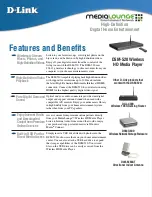
Sensor Care
Triodes And Extender Cables
The EMG sensor can be used with a Triode electrode, snapped onto the sensor head, or with
Single electrodes, individually snapped onto each of the three leads of an extender cable. If you
have to alternate between the two methods, make sure to leave only one set of electrodes
connected to the sensor at any one time. Forgetting to remove the unused electrodes could
degrade the quality of the recorded signal because of extra susceptibility to noise.
Equipment Storage
As a general rule, we recommend that you remove any electrodes from the sensor heads and
extender cable leads when you are done using your equipment. To avoid the possibility of
corrosion of the snap connectors, only use Thought Technology triode’s with metal snaps. Using
one part silver-Silver Chloride electrodes promote corrosion and may void your warranty. Many
electrodes are coated with a very conductive substance that can cause the sensor’s metal parts
to corrode if they are left in contact with it for long periods of time. Also, please be careful, when
unsnapping electrodes, not to damage the wires. Avoid twisting and pulling on the wires by
holding the sensor head, the connector itself or the extender cable’s rounded snap.
SURFACE ELECTROMYOGRAPHY (SEMG)
Sensor Types
The MyoScan and the MyoScan-Pro are the surface EMG (SEMG)
sensors for the ProComp Infiniti device. SEMG is recorded from
a sensor that is placed on the skin’s surface. The MyoScan-Pro
sensors can be used on any input; the MyoScan-Pro
automatically converts this signal to a root mean square (RMS)
signal (an analog rectification is done inside the circuitry). The
result is a slower signal, which can be sampled at a low rate
without distortion. MyoScan sensors are used on inputs A or B,
which sample at 2048 s/s. The sensor captures raw EMG at
frequencies up to 500 Hertz (Hz) and maintains the signal in its
faster RAW format.
Operating Principle
EMG measures muscle activity by detecting and amplifying the tiny electrical impulses that are
generated by muscle fibers when they contract. Since all the muscle fibers within the recording
area of the sensor contract at different rates, the signal detected by the sensor is a constantly
varying difference of potential between its positive and negative electrodes. The number of
muscle fibers that are recruited during any given contraction depends on the force required to
perform the movement. Because of this, the intensity (amplitude) of the resulting electrical signal
is proportional to the strength of contraction.
ProComp Infiniti Hardware Manual
22
















































